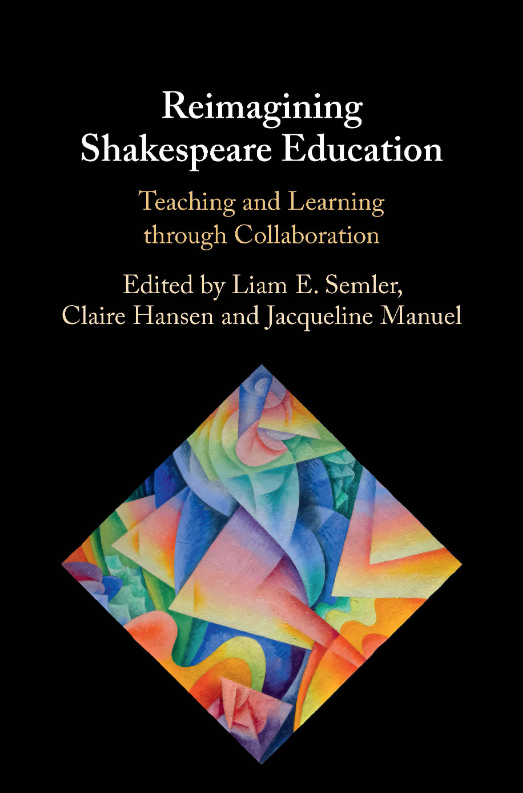“Collaborative Rhizomatic Learning and Global Shakespeares”
Reimagining Shakespeare Education: Teaching and Learning through Collaboration, ed. Liam E. Semler, Claire Hansen, and Jacqueline Manuel (Cambridge University Press, 2023), 225-238 ::: ISBN 9781108778510 ::: DOI 10.1017/9781108778510.023
Collaborative learning as a pedagogical method effectively reflects the communal character of the performing arts. By creating knowledge about Shakespearean performance collaboratively, students and educators lay claim to the ethics and ownership of that knowledge, an act that is particularly urgent and meaningful in the age of COVID-19 when we need to rebuild sociality.
This chapter demonstrates how communal writing assignments and digital, video-based pedagogy turn textual and performative variants in Shakespeare’s plays into a cluster of inclusive narratives for critical analysis.
Shakespeare is no longer a white canon with culturally predetermined meanings.
Through collaborative annotations of textual variants, this pedagogy encourages students to claim Shakespeare’s language rather than aiming for interpretations that are gratuitous or merely politically correct.
Working in tandem with collaborative textual analysis is video-centric collaboration. By turning a large number of performance versions into common objects of study, my digital video project makes links between adaptations that were previously regarded as distinct.
In pedagogical contexts, the malleability of digital video puts play texts and performances to work in an interactive environment.
Online performance video archives can encourage user curation and interaction with other forms of cultural records. In practice, this redistributes the power of collecting, re-arranging and archiving cultural records away from a centralised authority to the hands of student users.
As Liam E. Semler, Claire Hansen and Jacqueline Manuel mention in the Introduction to Part 4, to which Alexa Alice Joubin’s chapter belong, she embraces a non-linear structure and an openness in the classroom that fosters the unexpected.
Joubin’s approach is rhizomatic, in the sense that it replaces “the linear, arborescent, grand narrative.” A rhizome has no centre and grows in all directions. In this way, her enquiry-based learning ‘discovers deep connections among seemingly distinct interpretations’ (p. 226).
